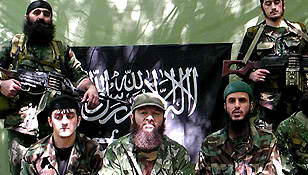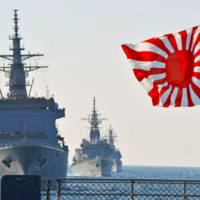How has the Islamic State achieved “success” in the Philippines? How is it possible that it maintains its position? What roles does IS play? Why does it remain an attractive phenomenon in Mindanao? And why is it considered a threat? This article aims to answer these questions.
The term Islamic State has been used mainly in the context of the situation in the Middle East. Although the phenomenon originates there, its influence and ideology have spread throughout the world, including Southeast Asia. At the same time, this version of violent extremism poses a threat to peace, security, and the current geopolitical situation [1][2].
The so-called Moro conflict has developed as a long-standing resistance of the Moro people against the authorities in the southern region of the Philippines, Mindanao. Since 1968, Islamist militant organizations have been trying to achieve independence and self-determination for the local Muslim minority. In 2014, approximately twenty of these groups united under the black flag of the Islamic State to support the achievement of these goals. Five years later, the so-called Bangsamoro Autonomous Region was established in Mindanao. This outcome, however, has not ensured peace or satisfaction for the Islamists in the area [1][2][3].
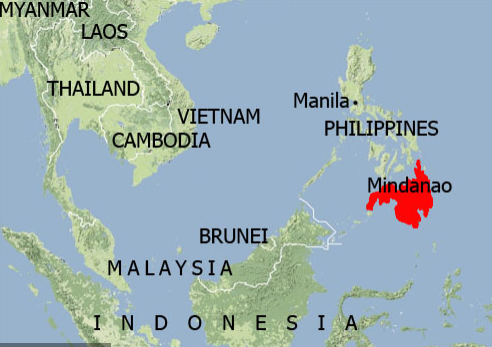
What is the basis of the Islamic state regardless of where it appears?
The Islamic State’s ideology is often violent and/or contains anti-democratic and anti-systemic thoughts. The main principles are based on Islamic fundamentalism, jihadism, Salafism, and Wahhabism. This means that adherents believe and follow what they believe is the original version of Mohammad’s teachings, which perceives Islam as the main guide for all aspects of people’s lives. One of the key goals is the establishment of a sovereign, unified and independent kingdom under the rule of Allah’s Law, known as Sharia law [3][4][5][6][7][8].
Why are this ideology and its adherents perceived as a threat?
Islamist terrorist groups aim to promote the ideas of specific religious communities and defend them from external ideological and/or violent influences. They also want to strengthen public attention toward Islam. At the same time, they justify their actions and violent motivations (e. g. jihad and internal spiritual campaigns against the West) by purposely emphasizing specific parts of the religious source, the Koran [7][8][9].
The Islamic State in the Philippines (ISP) presents its own violent actions as self-defense against assimilation, the brutality of the authorities, and the elimination of discrimination. At the same time, it demands control over territory with a predominantly Muslim, ethnic Moro, population (the southwestern region in the so-called Bangsamoro Autonomous Region in Muslim Mindanao (BARMM)) where it could lead a caliphate within an independent ethnocentric entity or self-governing unit with its own status. These requirements stand against the current state division of the Philippines and are seen by the authorities as an effort to undermine the sovereignty of the state, although promoters and adherents of the ISP ideology fight for “freedom” and self-determination of the minority. At least in their own eyes [9][10][11].
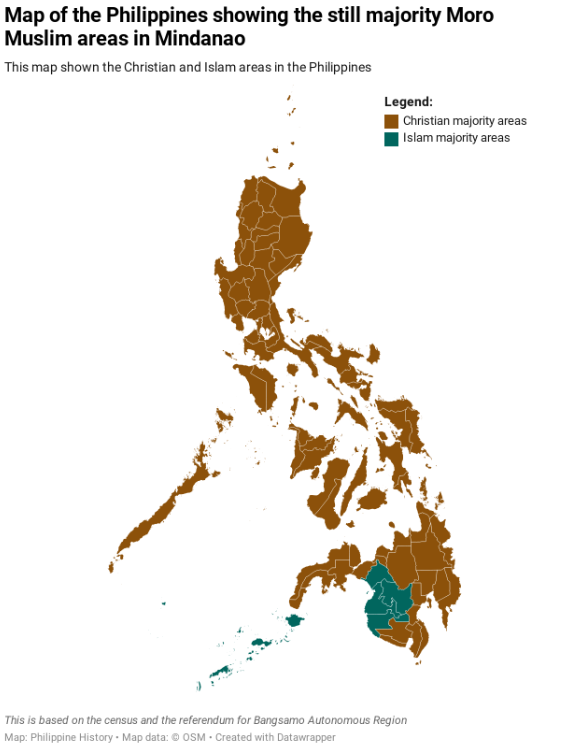
Mindanao conflict as a basis for the position of the Islamic State in the Philippines
The Mindanao conflict, waged by military groups representing Muslims against Philippine authorities, has a “tradition” dating back to the 14th century when Islam spread there. During the Spanish invasion, many Muslims in the Philippines converted to Christianity and Mindanao remained the only area that was not conquered. The locals resisted due to the use of defensive jihad, just as they did during the war against Americans in the 19th to 20th centuries. The eventual US victory brought Christians to Mindanao, which increased tensions and triggered violent clashes and skirmishes between religious groups [15][16][17][18].
After the Jabidah massacre in 1968, when the Philippine Army slaughtered Muslim paramilitary troops during their joint training, Islamist resistance rose and many jihadist organizations (MNLF, BIFF, MILF, ASG, etc.) emerged. Strong hatred and intolerance towards the majority spread among the minority members, many of whom have radicalized. Eventually, the MNLF signed agreements with the Philippine authorities that resulted in the establishment of the Autonomous Region of Muslim Mindanao and the ratification of a new local law in thirteen Muslim provinces. However, the aforementioned outcomes were neither followed nor respected and the region remained under the Philippines’ leadership [2][10][11][18][20].
What is the ISP?
It is unclear when the Islamic State began operating in Southeast Asia. However, the group excels at exploiting poor living conditions and spreading its own influence in Muslim-dominated regions [14][19][21][23].
In 2014 and after, approximately twenty insurgent, guerilla, and terrorist organizations united in the Philippines under the banner of the Islamic State, pledging and with its ideology and jihadist narrative pledged allegiance to Abu Bakr al-Baghdadi (the first Caliph of the IS). They began to cooperate with the goal of becoming one of the wilayat-bayat (“peripheric province”) of the IS. Although some of them decided to join mainly for funding and legitimacy, an important aspect of their unification was their shared belief that the Moros should self-determine, separate from the Philippines, and form a politicly independent caliphate in Mindanao [1][11][14][21][22][23].
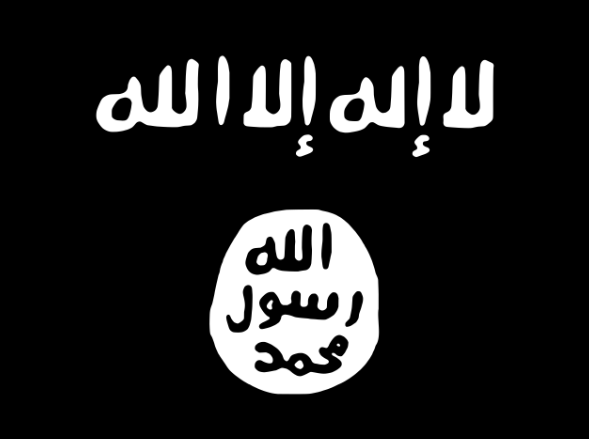
The ISP contains many diverse organizations with different structures, often operating independently, but we can identify some elements that they have in common. For example, they use similar terrorist tactics, and criminal methods such as assassinations, kidnappings, and suicide bombings (since 2018). They earn money from smuggling and trafficking drugs, weapons, and people. Child soldiers are part of their units. Sometimes they proceed in coordinated ways to achieve their goals by fighting together against Philippine Army. For operations, the fighters effectively adapt to and benefit from Mindanao’s densely forested terrain. All incidents are used as propaganda at the global level by other Islamist actors. However, the ISP itself has not an aspiration to spread Islam outside this area [2][12][14][19][21].
Among the most influential ISP groups belongs the brutal “protégé” with links to the worst bloodsheds in Mindanao, the Abu Sayyaf Group (ASG). It operates in Sulu, Basilan, and Zamboanga and its main goal is to purge all Christians from the area. There was also (until the siege of Marawi) the matriarchal Dawlah Islamiya (Maute Group), whose units were organized as a private militia and whose leaders were considered “royalty”. Currently, the most prominent Bangsamoro Islamic Freedom Fighters (BIFF) operates mainly in Maguindanao, North Cotabato, and Sultan Kudarat and it is strong enough to fight the military in regular battles [14][24][25][26][27][28]. There are many more, but the purpose of this article is to analyze the causes and reasons for the existence of the coalition, not to describe in depth the ISP itself.
How did the Islamic State achieve success in the Philippines? How is it possible that it still holds its position? What roles does it play there?
As mentioned, the Moros have a long history of resistance against ruling overlords which has been accompanied by increasing radicalization, intolerance towards the majority, and the group’s religious conservatism. Muslims in southwestern Mindanao have always dreamed of independence and some of the caliphate in the region. The historical marginalization, poor living conditions, and basically the whole situation in the area enables the Islamist ideology to easily influence the local dissatisfied people and gain their support [19][20].
With the emergence of the ISP, the scale and intensity of the struggle for independence have increased. The forces carried out violent criminal activities, armed clashes and skirmishes, and bombings. As an example, we can mention a major bombing of the Roxas Ave night market in Davao City in September 2016, which left 15 dead and 70 injured, followed by Rodrigo Duterte’s declaration of a state of emergency and the conduct of law enforcement operations throughout Mindanao [13][20][21][29].
The year 2017 was the most notable. From May 23 to October 23, a coalition of ISP troops sieged Marawi, the provincial capital of Lanao del Sur. This was an attempt to carry out al-Baghdadi’s orders. This example represents “(…) the longest urban battle in modern Philippine history and ISIS’s greatest achievement in urban warfare outside of Syria and Iraq (…)” [Temby 2019: 116]. The demonstration of unity and ability to hold territory was supposed to result in the designation of the ISP as an official “East Asia Wilayah” (ISIS province) [1][11][31][32].
During the siege, the center of Marawi was destroyed by extensive bombing, more than a thousand people were killed and a huge number of civilians fled. However, ISP troops were trained for irregular warfare, guerrilla, insurgency, and jungle, not urban warfare. The group suffered a significant loss, and the cadre strength was greatly reduced [1][19][28][32][33].
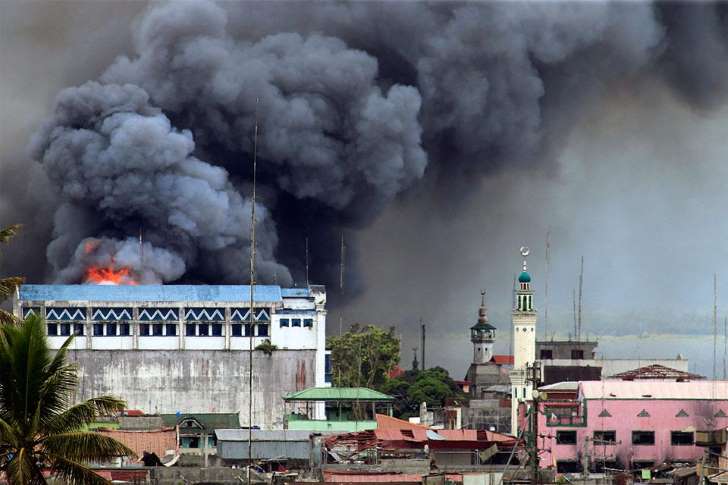
Although only a few hundred of ISP’s fighters (about 300-500) survived the siege of Marawi, the main leadership was neutralized (including the emir), and some member groups disintegrated, the coalition used the battle for its own propaganda. The Philippine Army’s methods also helped portray the government as a source of suffering and destruction (massive bombings, displacement of the Marawi population, violent clearance operations against potential ISP members). For ISIS, the five-months-long siege was a huge strategic success that helped the ISP recruit new members, including foreign fighters, and pursue other terrorist actions (e. g. the suicide attack on Our Lady of Mount Carmel Cathedral in Jolo) that demonstrate the ISP’s ability to continue its coordinated persecution in Mindanao [1][19][25][28][30][31][32][33]. On the other hand, ISP’s losses were substantial and the group still has not been able to fully recover. It remains a fragmented actor struggling to regain its strength and rebuild its own capacities.
Yet, the Marawi siege and the entire Islamic insurgency contributed to a breakthrough in the peace negotiations, resulting in the establishment of the Bangsamoro Autonomous Region in Muslim Mindanao (BARMM) in 2019. However, this only happened through talks between the authorities and the MILF, a rebel armed group that represents only a small part of the Moro population (it is not a member of the ISP) and is currently undergoing a transformation into a local leading semi-democratic political entity. Bangsamoro Organic Law implemented limited Sharia law, granting the locals sort of autonomy and bounded self-governance in Mindanao [2][14][25].
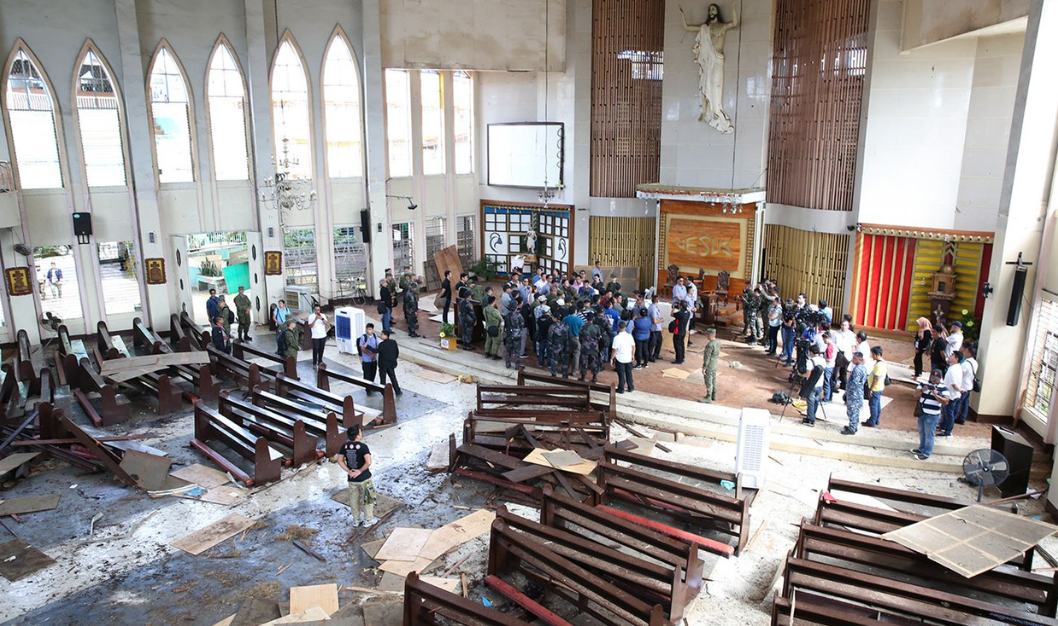
Nevertheless, most non-governmental violent actors have not been participating in MILF centered negotiations until today. They remain irritated and disappointed with the results of the peace process (lack of independence, restricted and limited self-government for Mindanao, selective political representation of Muslims during negotiations on their future) and stand in opposition to the new local government with its own vision. The ISP included [2][14][25].
Why the ISP remains an attractive actor in Mindanao?
As mentioned earlier, the current status of BARMM is a product of the MILF and does not represent the interests of the whole Mindanao population. At the same time, poor living conditions in the region have remained, the political representation of Muslims is still more superficial than genuine, and discrimination against the minority prevails. The “exclusivism” of the Bangsamoro Organic Law also causes the agreement to be not respected or endorsed by non-governmental armed violent groups other than the MILF. The ISP thus remains an attractive “alternative” for representing local Muslims who desire full self-determination, complete independence, and the implementation of entire Sharia law. It remains an actor who can disrupt the peace process, shock society, and test the fragile democracy of the BARMM while demonstrating its ability to pursue its own goals, garner Islamist international support, and hold territory [1][32][34].
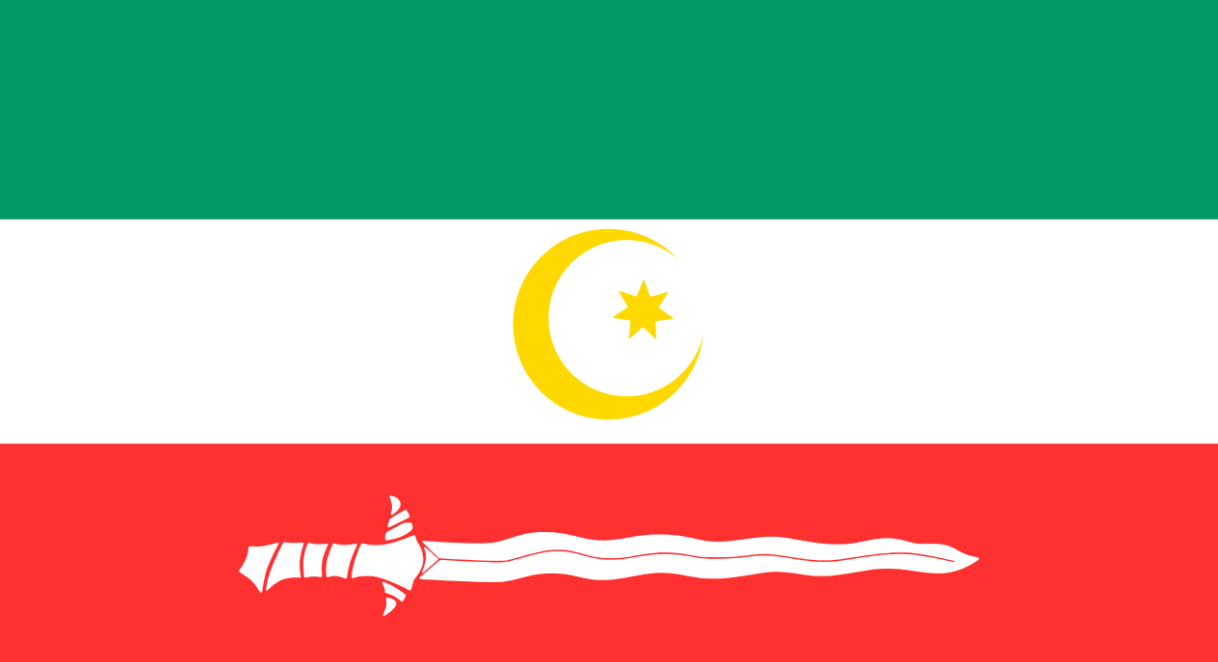
At the same time, the Philippines and the “famous” ISP represent an attractive destination for foreign fighters (especially for those who were a part of ISIS). This aspect is being used for greater propaganda within the Muslim population. ISP recruitment is also supported by the lack of counterterrorism and counter-extremism strategy and tactics in the Philippines. The fall of Kabul, Covid-19, and other crises help spread Islamic ideology and traditions within Mindanao by distracting the focus of the government from issues such as Islamism and terrorism [20][32][33][35][36].
What next?
However, the ISP’s activities and effectiveness are currently limited due to its fragmentation and scarcity of its financial, material, and personnel capacity. Yet, there is a risk present that this version of extremism and terrorism could spread across Mindanao. The majority of Muslims in the region are still not satisfied with the current situation and the conditions in which they live. The causes of the Moro conflict are complex and include social, religious, cultural, ethnic, economic, environmental, political, and historical bases. At the same time, the health crisis, the fall of Kabul to the Taliban, and the current geopolitical situation may psychologically boost Muslims to join the struggle and/or continue the jihad for “greater freedom” of their people and nations. The situation and all these factors create a fertile ground for instability and encourage the continuation of the Moro conflict [11][20][22][31][32][34][35][37].
Article was reviewed by: Martin Blecha.
Sources
[1] Zenn, Jacob. 2019. “The Islamic State’s Provinces on the Peripheries: Juxtaposing the Pledges from Boko Haram in Nigeria and Abu Sayyaf and Maute Group in the Philippines.” Perspectives on Terrorism, Vol. 13., No. 1, 87-104.
[2] Loesch, Juliette. 2017. “The GPH-Milf Peace Process in the Philippines to Prevent and Transform Violent Extremism in Mindanao.” Journal of Peacebuilding & Development, Vol. 12, No. 2, 96-101.
[3] Berman, Sheri. 2003. “Islamism, Revolution, and Civil Society.” Perspectives on Politics, Vol. 1, No. 2, 257-272.
[4] Wagemakers, Joas. 2016. “Salafism.” Oxford Research Encyclopedia of Religion. August 2016. [online]. [cit. 18. 7. 2022]. Available at: (PDF) Salafism (2016) | Joas Wagemakers – Academia.edu.
[5] Blanchard, M. Christopher. 2008. “The Islamic Traditions of Wahhabism and Salafiyya.” CRS Report for Congress. 24th January 2008. [online]. [cit. 18. 7. 2022]. Available at: The Islamic Traditions of Wahhabism and Salafiyya (fas.org).
[6] Liebl, Vernie. 2009. “The Caliphate.” Middle Eastern Studies, Vol. 45, No. 3, 373-391.
[7] Weismann, Itzchak. 2011. “Modernity from Within: Islamic Fundamentalism and Sufism.” Der Islam. Bd. 86, 142-170.
[8] Brachman, Jarret M. 2009. Global Jihadism: Theory and practice. London and New York: Routledge.
[9] Mareš, Miroslav. 2005. Terorismus v ČR. Brno: Centrum strategických studií. [Translated by: Kristýna Drmotová, 18. 7. 2022].
[10] Kamlian, Jamail A. 2003. Ethnic and Religious Conflict in Southern Philippines: A Discourse on Self-Determination, Political Autonomy and Conflict Resolution. Islam and Human Rights Fellow Lecture. Islam and Human Rights Project, School of Law, Emory University, Atlanta, GA. 4th November 2003.
[11] Sumpter, Cameron – Franco, Joseph. 2021. “Islamist Militancy in Indonesia and the Philippines: Domestic Lineage and Sporadic Foreign Influence.” International Centre for Counter-Terrorism. [online]. [cit. 18. 7. 2022]. Available at: Islamist Militancy in Indonesia and the Philippines: Domestic Lineage and Sporadic Foreign Influence – ICCT.
[12] Herbert, Siân. 2019. Conflict analysis of The Philippines. K4D Helpdesk Report 648. Brighton: Institute of Development Studies.
[13] Habulan, Angelica Barangan. 2017. “Philippines.” Counter Terrorist Trends and Analyses, Vol. 9, No. 1, 26-29.
[14] Banlaoi, Rommel C. 2018. “The Lamitan Bombing and Terrorist Threat in the Philippines.” Counter Terrorist Trends and Analyses, Vol 10, No. 9, 1-5.
[15] Glang, Alunan C. 1969. Muslim Secession or Integration. Quezon City: R. P. Garcia Publishing.
[16] Buendia, Rizal G. 2005. “The State-Moro Armed Conflict in the Philippines Unresolved National Question or Question of Governance?” Asian Journal of Political Science, Vol. 13, No. 1, 110-111.
[17] Jacinto, Al. 2005. “Filipino Muslims Rember Arrival of Arab Missionary.” Arab News. [online]. [cit. 17. 8. 2022]. Available at: https://www.arabnews.com/node/275564.
[18] Conciliation Resources. 2009. “Conflict and Peace in Mindanao (MNLF): A summary of Accord and other publications.” Conciliation Resources. June 2009. [online]. [cit. 17. 8. 2022]. Available at: https://www.c-r.org/resource/conflict-and-peace-mindanao-mnlf.
[19] Beech, Hannah – Gutierrez, Jason. 2019. “How ISIS Is Rising in the Philippines as It Dwindles in the Middle East.” New York Times. 9th March 2019. [online]. [cit. 17. 8. 2022]. Available at: https://www.nytimes.com/2019/03/09/world/asia/isis-philippines-jolo.html.
[20] Jayakumar, Shashi. 2017. “The Islamic State Looks East: The Growing Threat in Southeast Asia.” CTC Sentinel: Combating Terrorism Center at West Point, Vol. 10, Is. 2, 27-33.
[21] Gunaratha, Rohan. 2017a. “The Islamic States Northward Expansion in the Philippines.” Counter Terrorist Trends and Analysis, Vol. 9, No. 5, 1-4.
[22] Jadoon, Amira – Jahanbani, Nakissa – Willis, Charmaine. 2020. Rising in the East: The Evolution of the Islamic State in the Philippines. United States Military Academy: Combating Terrorism Center at West Point.
[23] Banlaoi, Rommel C. 2016. “Abu Sayyaf Group’s Persistence: A Chronological Analysis of Crime-Terror Nexus In The Philippines and The Isis Connection in Southeast Asia.” Peace and Security Review, Vol. 7, NO. 15, 50-72.
[24] Singh, Bilveer – Singh, Jasminder. 2019. “From ‘bandit’ to ‘Amir’ – The Rise of the Abu Sayyaf Group as a Jihadi Organization in the Philippines.” Asian Politics & Policy, Vol. 11, No. 3, 399-416.
[25] Gupta, Tanvi – Routray, Bibhu Prasad. 2018. “Special Report #13: No End in Sight: Islamist Militancy in the Philippines since the Marawi Siege.” Mantraya: Strategy. Innovation. Alternatives. 18th August 2018. [online]. [cit. 17. 8. 2022]. Available at: http://mantraya.org/special-report-no-end-in-sight-islamist-militancy-in-philippines-since-the-marawi-siege/.
[26] Gopalakrishnan, Raju – Mogato, Manuel. 2017. “The Mautes of the Philippines: from monied family to Islamic State.” Reuters. 23rd June 2017. [online]. [cit. 17. 8. 2022]. Available at: https://www.reuters.com/article/us-philippines-militants-matriarch/the-mautes-of-the-philippines-from-monied-family-to-islamic-state-idUSKBN19E0A9.
[27] Franco, Joseph. 2014. “Islamic State and Southern Philippines: Tenuous links with militants.” RSiS Commentary, Nanyang Technological University, No. 181. 12 September 2014.
[28] Hart, Michael. 2018. “A Year After Marawi, What’s Left of ISIS in the Philippines?” The Diplomat. 25th October 2018. [online]. [cit. 17. 8. 2022]. Available at: https://thediplomat.com/2018/10/a-year-after-marawi-whats-left-of-isis-in-the-philippines/.
[29] Hume, Time – Zdanowicz, Christina – Ellis, Raplh. 2016. “Philippines President: Explosion that killed 14 was act of terrorism.” CNN World. 3rd September 2016. [online]. [cit. 17. 8. 2022]. Available at: https://edition.cnn.com/2016/09/02/asia/philippines-explosion-davao-city/.
[30] Fealy, Greg. 2018. “Philippines.” In: Isaac, Kfir – Patel, Sofia – Micah Batt (eds.). Counterterrorism Yearbook 2018. Australian Strategic Policy Institute, 31-36.
[31] Gunaratha, Rohan. 2017b. “The Siege of Marawi: A Game Changer in Terrorism in Asia.” Counter Terrorist Trends and Analysis, Vol. 9, No. 7.
[32] Temby, Quinton. 2019. “Cells, Factions and Suicide Operatives: The Fragmentation of Militant Islamis in the Philippines Post-Marawi.” Contemporary Southeast Asia, Vol. 41, No. 1, 114-137.
[33] Seldin, Jeff. 2020. “Islamic State Holding on in Philippines, Despite Millions in US Spending.” VOA News. [online]. [cit. 17. 8. 2022]. Available at: https://www.voanews.com/a/east-asia-pacific_islamic-state-holding-philippines-despite-millions-us-spending/6194285.html.
[34] Singh, Jasminder – Dass, Rueben Ananthan Santhana. 2021. “The Rise of Saifullah: Islamic State’s New Point Man for Southeast Asia?” The Diplomat. [online]. [cit. 17. 8. 2022]. Available at: https://thediplomat.com/2021/08/the-rise-of-saifullah-islamic-states-new-point-man-for-southeast-asia/.
[35] Yaoren, Kenneth Yeo. 2019. “Philippines’ Foreign Fighter Phenomenon.” International Centre for Political Violence and Terrorism Research, Vol. 11, No. 7, 16-21.
[36] Singh, Jasminder – Jani, Muhammad Haziq. 2020. „Covid-19 and Terrorism in the Southern Philippines: More Trouble Ahead.“ The Diplomat. [online]. [cit. 17. 8. 2022]. Available at: https://thediplomat.com/2020/08/covid-19-and-terrorism-in-the-southern-philippines-more-trouble-ahead/.
[37] Franco, Joseph. 2022. “Islamic State-linked groups in the Philippines: Fragmented and Weakened.” Program on Extremism. [online]. [cit. 17. 8. 2022]. Available at: https://extremism.gwu.edu/islamic-state-linked-groups-philippines-fragmented-and-weakened.

